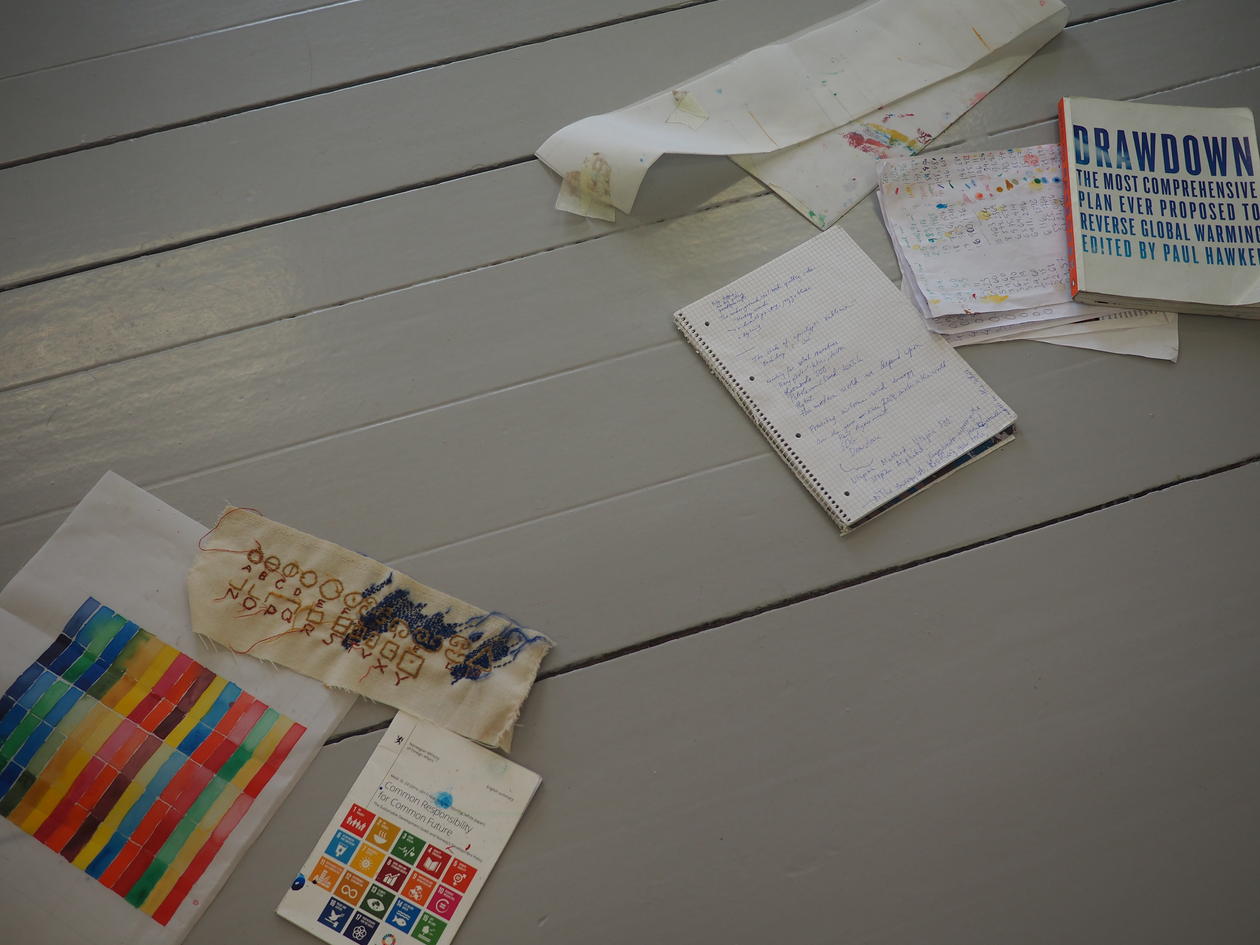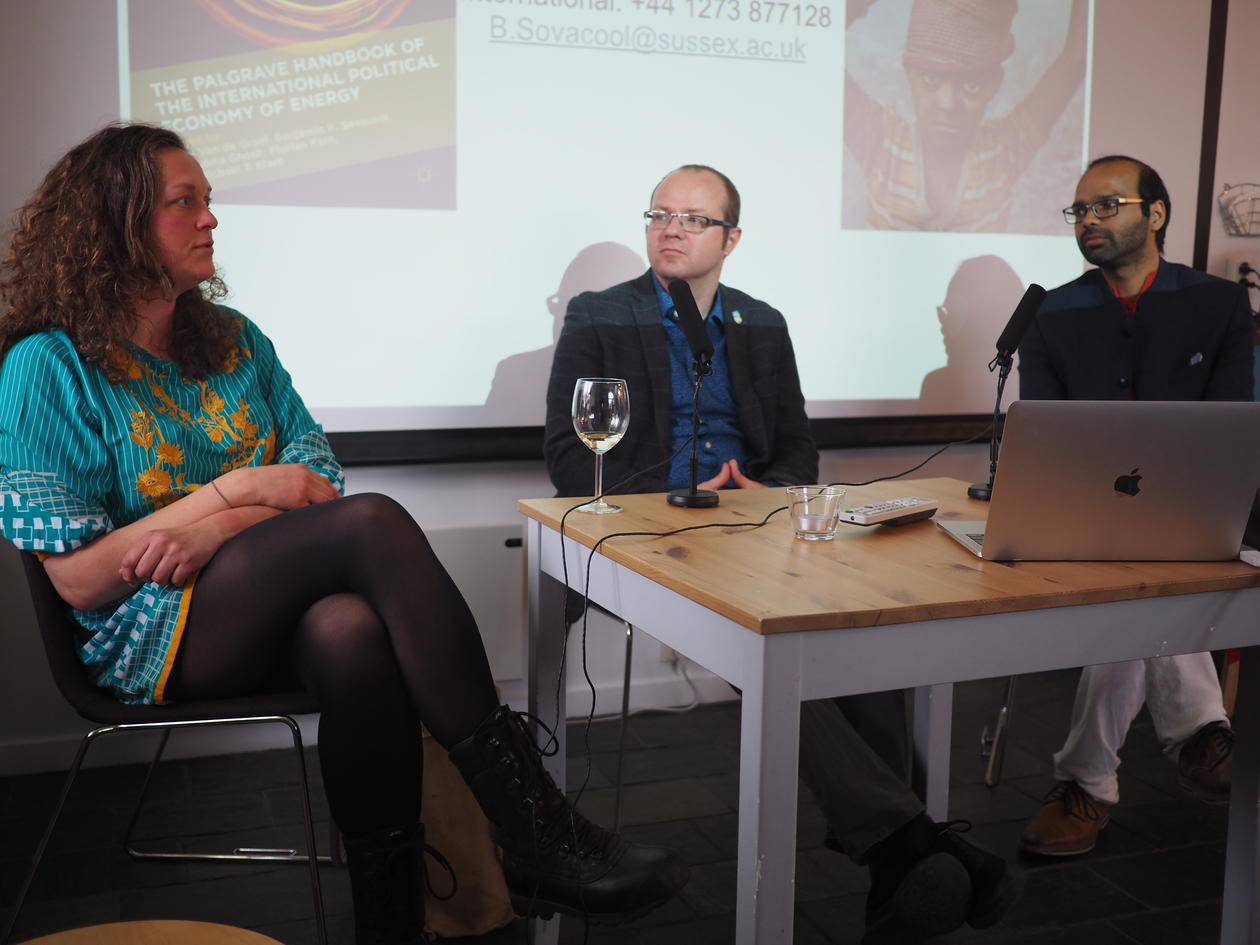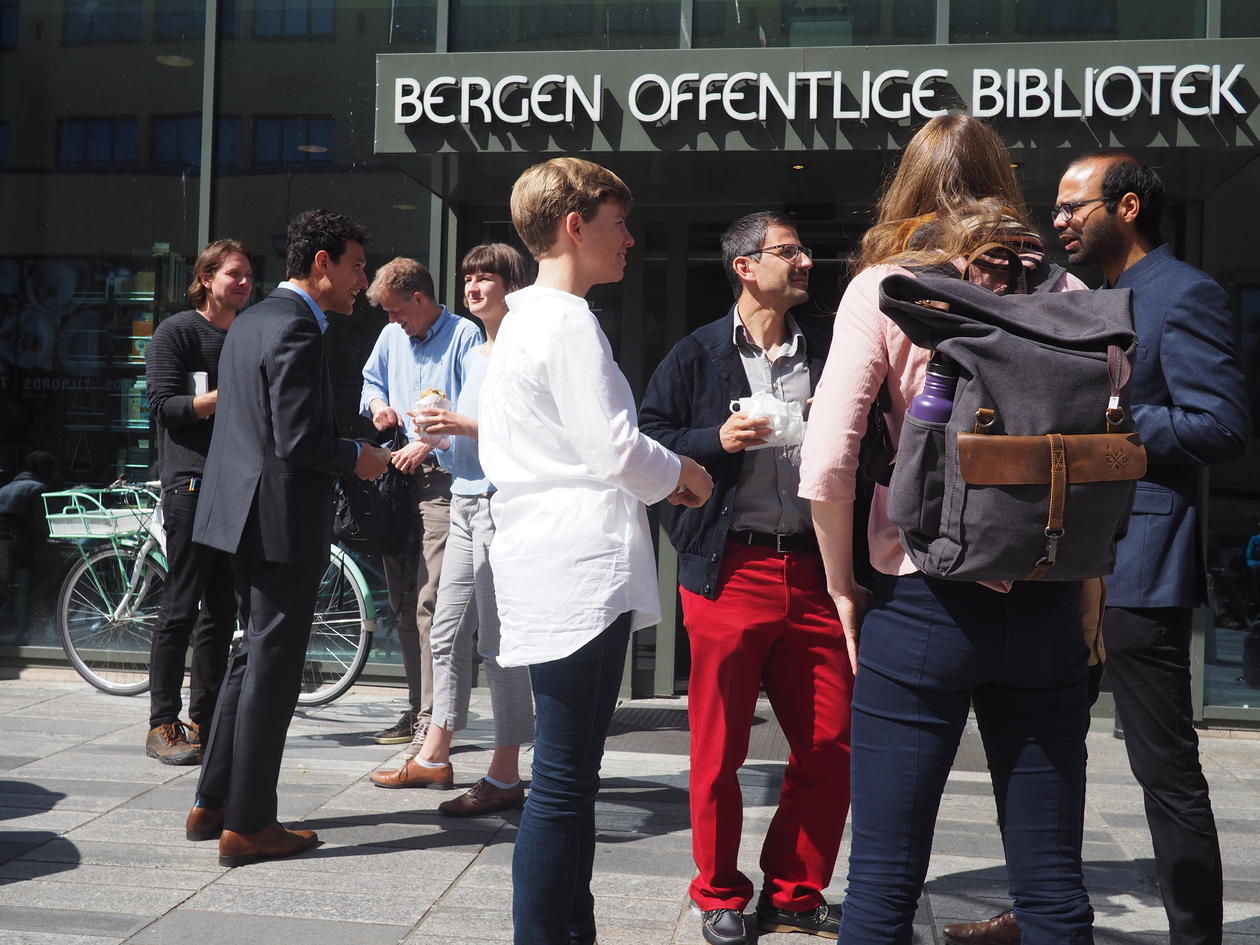Imagining and understanding energy transition
The 14th of May was an evening filled with art and reflection at the Hordaland Art Centre. Postdoctoral researcher Siddharth Sareen invited textile artist Margrethe Brekke Kolstad and Professor of energy policy Benjamin Sovacool to discuss how art and academia can bring energy transition into the public debate.

Hovedinnhold
The conversation followed a guided tour of Brekke’s solo exhibition Potential exceeds the demand exhibition, an exhibition that marked the conclusion of an unusual collaboration. Brekke worked closely with UiB’s energy director Kristin Gudrandsen Frøysa, Finn Gunnar Nielsen professor of geophysics and researcher Siddharth Sareen to develop a series of intricate textile sails in an attempt to organise and understand the messiness of energy transitions.
The exhibition comprises of three impressive textile sails. Not only are they impressive because of their size, but also the shock of colour that hits you. The first sail to meet you is “the next acceleration”. The piece uses data from project drawdown as the points of acceleration with refrigeration as the starting circle. The bright colours are inspired from the sustainable development goals.
-(The next acceleration) is an emblem of the energy transition that we currently are in and the paradigm shift, the structural solutions that we will need. It shows are of the components, all of the nuts and bolts we need, but also the good stories in the solar impulse adventure,” Margrethe K. Brekke explains.
Professor Sovacool gave a sobering talk on the tensions and trade-offs in energy transitions. Presenting the darker sides of traditional fossil energies and renewable energies and what can be done in research. Further explaining how we should reframe the debate of energy transitions as a justice issue:
-It isn’t just about the climate; it isn’t just about the economy, it’s about ethics and morality and justice. It is about what is fair, what is right and what is democratic. It is what is dignified and what is socially acceptable to all of us.” Sovacool said.
The event kicked off a two-day workshop in Accountability and legitimacy in energy transitions governance. Leading researchers in this field gathered at the Public library reflecting on the themes of accountability, governance and legitimacy.
A small exhibition titled 'Idea Box for Energy Transition' was set up in the centre of the public library. The idea behind this exhibition is to allow the general public to write suggests for energy transition in society.
Manuscripts from the workshop are submitted to be a part of the forthcoming open access special issue titled 'Legitimacy and Accountability in the Governance of Sustainable Energy Transitions', edited by Siddharth Sareen and CET Director Håvard Haarstad.



